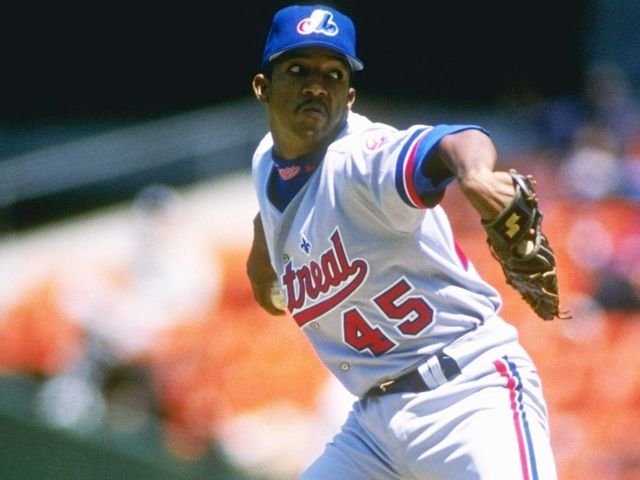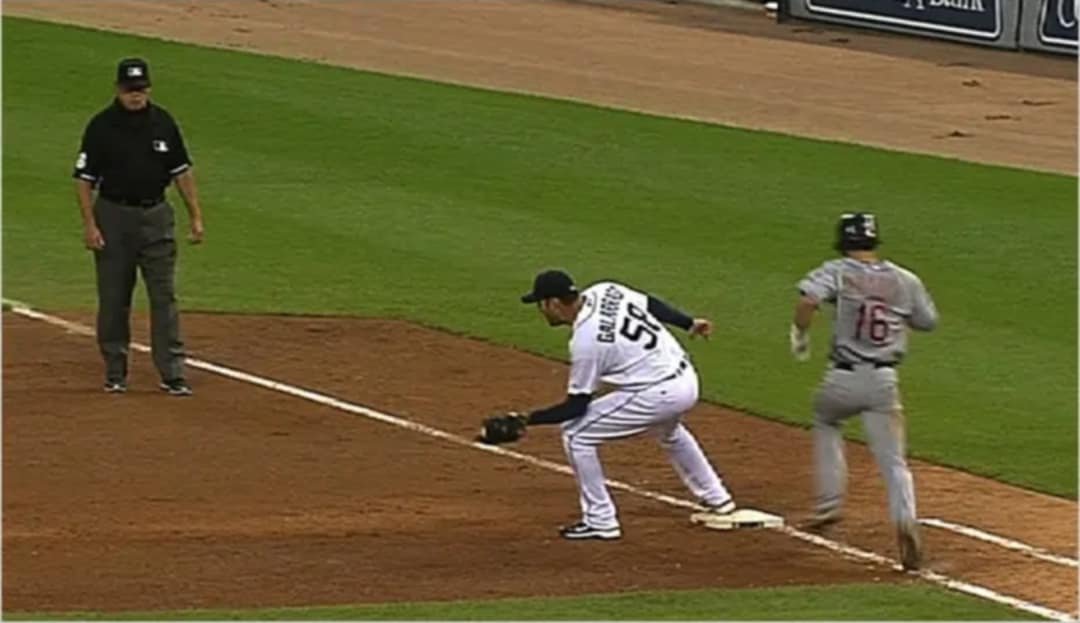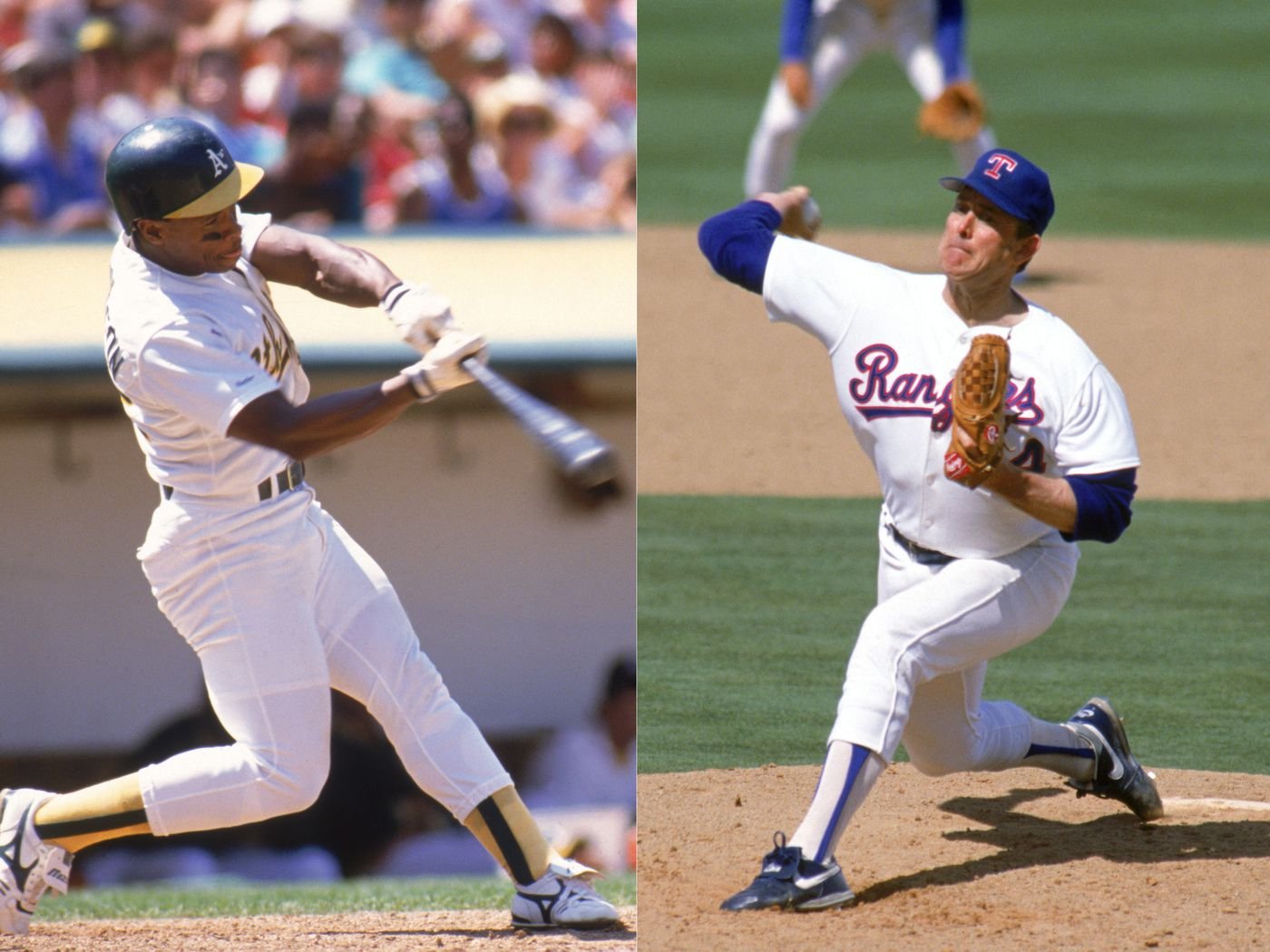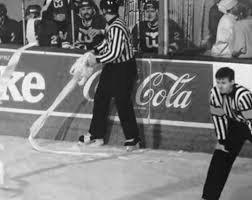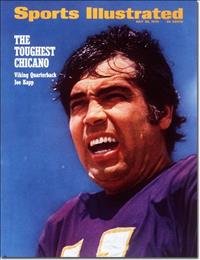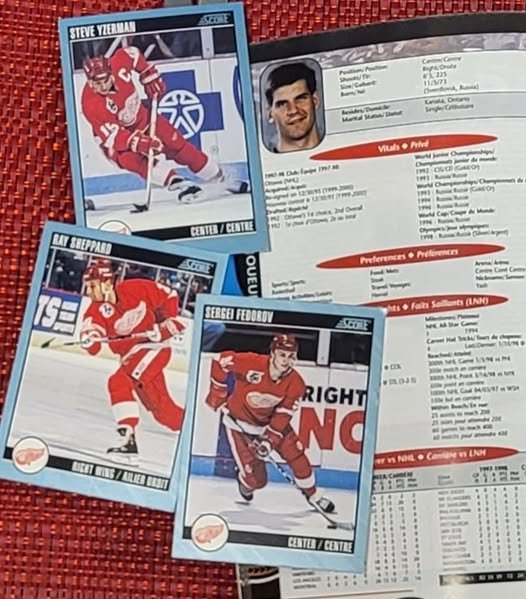By Howie Mooney
It surely can be said that every generation is defined by its stars. And those would not be the minor stars, but the monoliths, the great ones who can still be identified and remembered generations later. Mary Pickford, Babe Ruth, Frank Sinatra, Elvis Presley, Marilyn Monroe, Mickey Mantle, The Beatles, Muhammad Ali, Michael Jordan…….they all spring easily and readily to mind. Stars who were all colossal, universal, and instantly recognizable.
Over the years, there have been stars in every sport that have defined their generations. In hockey, Howie Morenz, Gordie Howe, Maurice Richard, Bobby Hull, Bobby Orr, Guy Lafleur, Wayne Gretzky, and Mario Lemieux were massive in each of their times. Over the last forty years, has there been anyone who was as big as Michael Jordan, Tiger Woods, Roger Federer, Rafael Nadal and Lionel Messi? Maybe there have been, but in the North American sports consciousness, these five are huge.
In 1969, New York sports columnist Jimmy Cannon wrote “Some men define a generation. It may be the Beatles or Lenny Bernstein or Frank Sinatra or Picasso or Willie Mays or Wilt Chamberlain or Marlon Brando or Tennessee Williams.” But there is one man, who in his day for that limited time window, was as big as any of these, and perhaps may have been bigger. Willie Mays.
It may be difficult for anyone who never saw him play or didn’t even know of the magnitude of baseball in the everyday lives of sports fanatics in North America in the 1950s, ‘60s and 70s to understand his universality. In fact, the biggest personalities of the ‘50s and ‘60s were as in awe of Willie Mays as the incredible throngs of fans were with Sinatra, Cary Grant, Groucho Marx and Woody Allen.
In 2007, at the annual induction of the California Hall of Fame, there, on the stage being enshrined were Steve Jobs, Willie Mays, and representing their fathers, the sons of Jonas Salk and John Wayne. “Absolutely incredible, especially when you have Willie here,” noted Eldrick (Tiger) Woods, who was also being honoured there on that night.
There was no bigger star in America than Willie Howard Mays from the mid 1950s to the mid-to-late 1960s. Remember that there was a 1954 song by a group called The Treniers called “Say Hey” that featured and was about Willie Mays. On September 27, 1954, The Tonight Show was airing for the first time. On its debut night, the network wanted to get the show off with a bang and when viewers looked in on the program on that inaugural evening, they saw Steve Allen doing a split screen interview with a pyjamaed Willie Mays, who was at his home getting ready for bed.
A couple of days after that, Mays and the Giants were playing in the first game of the World Series against the Cleveland Indians at the Polo Grounds. In the top of the eighth, with the score tied 2-2 and runners on first and second, Vic Wertz came to the plate. Wertz had gone 3-for-3 on the day to that point. Leo Durocher had just removed pitcher Sal Maglie and replaced him with Don Liddle.
Wertz slammed a Liddle offering to the deepest part of that very deep centre field, but Mays made the famous spectacular over-the-shoulder basket catch to retire Wertz and keep any runs from scoring. The Giants went on to win the game 5-2 in ten innings and eventually swept the series. Wertz was the only batter Liddle faced in that game. Durocher brought Marv Grissom in to take over for him. When Grissom got to the mound, Liddle handed him the ball and reportedly said, “Well, I got my guy.”
Shortly after the World Series, Mays appeared with Wertz on stage with Ed Sullivan for his popular television program. Sullivan asked Wertz about the play on which Mays caught the ball. Wertz told the host that hitting that ball as deep as he did was one of his greatest thrills as a player “up until he caught the ball”, as he pointed at Mays.
Steve Rushin wrote a wonderful piece on Mays in July of 2021 for Sports Illustrated. He talked about a moment in 1958, after the Giants had moved from the Polo Grounds in New York to Seals Stadium in San Francisco. During batting practice, an elderly gentleman walked down the steps to a point where could get close to Mays. “Bet you don’t know who I am,” the man said. Mays replied, “Nope.” The older man came back at Mays, “Give you a hint. My first name is Ty.” It was Ty Cobb.
Thirty years earlier, Cobb had been in Mays’ shoes. He was the one shaking hands with the likes of Henry Ford and Thomas Edison. Now he was seeking a moment with the modern-day great ball player. Now, the 71-year-old Cobb was shaking hands with Mays. The two men posed for pictures together and for a brief moment, there were two pieces of baseball history standing beside one another.
But how did Mays get here?
Willie Howard Mays was born in Westfield, Alabama on May 6, 1931. While still in high school, he joined the Chattanooga Choo-Choos of the Negro minor league. He then was called up to the Birmingham Black Barons of the Negro American League. But he was also the quarterback, fullback and punter on his school football team. When his principal heard that Mays was playing professional baseball, he threatened to suspend him. Mays and his father worked out a deal where he would only play home games with the Barons so he could continue to play football at school.
When he graduated from school in 1950, the Brooklyn Dodgers and the Boston Braves both wanted him, but he signed with the New York Giants for $4,000. He began his professional career and finished out the 1950 season with the Class B Trenton Giants. He began the 1951 campaign in Triple-A with the Minneapolis Millers of the American Association. He played 35 games in Minny while batting .477 over that span.
Less than three weeks after his 20th birthday, on May 24, 1951, he was called up to the Giants. The hope among management with the team was that he could patrol the expansive centre field at the Polo Grounds. His first game with the G-Men was the next day. He went 0-for-12 to start his major league career. But in his next at-bat, homered out of the stadium off Hall-of-Famer Warren Spahn. After the game, when Spahnie was asked about the big hit, he said, “For the first sixty feet, it was a helluva pitch.” At the end of 1951, Mays was named the National League’s Rookie of the Year.
It wasn’t long after the 1951 season ended that Mays learned that he’d been drafted into the United States Army to fight in the Korean War. He would begin his service time at the end of May of 1952. By the time he returned to the game, spring training in 1954 was ongoing. He rejoined the Giants immediately. He hit 41 homers and drove in 110 runs, led the majors in batting with an average of .345 and was named the league’s Most Valuable Player for that season.
When you think about it, he finished his career with 660 homers. That’s 54 less than were hit by Babe Ruth in his career. Mays missed almost two full seasons (266 games) while with the Army. Oh, what might have been.
When you look at Mays’ statistics from 1954 through 1957, when the Giants were still playing in New York, he hit 163 home runs. He also began to extend his offensive focus to stealing bases and led the majors in thefts in both 1956 and 1957, he led the National League or the majors in slugging percentage three of those four years and he put up an OPS (on-base percentage plus slugging percentage) of more than 1.000 three times.
When the Giants moved from New York to San Francisco, Mays’ press clippings preceded him and fans in the team’s new home were holding certain expectations. But, well before Mays had come along, they also had been exposed to the greatness of Joe DiMaggio who grew up there and they started off by holding Mays up to ‘Joltin’ Joe’ as a comparison.
The team started off their west coast incarnation decently, going 9-5 in April of 1958, but they finished third in the National League in both of their first two seasons at Seals Stadium. Then, when the team moved to Candlestick Park in 1960, the Giants fell to fifth. The love affair between the fans and the team in San Francisco were slow to evolve. Couple that with the fact that Mays was not really the outgoing type and preferred to keep to himself, and you got a mix that was not necessarily great.
In a United Press International story from June of 1961, Hal Wood wrote that Mays had been “booed unmercifully in his first three seasons in San Francisco”. Wood speculated that perhaps his $80,000 salary was one of the spurs under the saddles of the Giants’ fans. He also surmised that perhaps their expectations of him were unfair because of that contract.
To say that Mays was put off by the fans’ treatment of him would be fair. Once his first couple of baseball seasons had ended in San Francisco, he would pack his things and head back east for the winters. But that antipathy began to fade during the 1961 campaign and Mays took notice. “I finally feel as though I’m liked here. I’m used to being booed on the road. A ball player expects that. But not at home.”
One of the things that Mays had always done, but never publicized, was to visit patients – and especially children – in hospitals in San Francisco, without any watchful eyes. Giants’ broadcasters Russ Hodges and Lon Simmons took Mays with them to visit a 14-year-old baseball fan who had been paralyzed from the neck down. As Hodges, Simmons and Mays were leaving the hospital, Mays said to the two men, “It’s an odd thing. I visited a boy in a hospital yesterday who was also paralyzed from the neck down.”
When you look at Mays’ time in San Francisco, he was in the top 6 in National League MVP votes in every one of his first nine seasons, even winning it in 1965. In fact, in the thirteen years from 1954 to 1966, he was named MVP twice, and was in the top six in voting in twelve of those seasons. In those first nine San Fran years, he slugged 355 homers. He won a Gold Glove for his play in centre field in every one of his first eleven seasons on the west coast as well.
The quality of his individual play was never in question. The problem, if there was a problem, may have been with the team that was out there with Mays. They did finish first in the National League in 1962. But there was this team down the Pacific Coast Highway in Los Angeles that, for a lot of that period of time, continually thwarted pretty much any attempts by the Giants to finish atop either the National League (or the NL West Division after 1969).
Mays’ relationship with the fans in San Francisco may have warmed back around 1961, but he became suitably accustomed to the occasional booing or catcalling. He had become somewhat immune to it. But that strain in their relationship saw a crossing of the line on a sunny, windy afternoon at Candlestick Park in September of 1968.
The Cincinnati Reds were in San Francisco to play the Giants on Monday, September 16. The Reds were in third place and the Giants were in second. Neither team were looking at getting a sniff of the pennant by this point. San Francisco was twelve games back of the Cardinals and was a game ahead of Cincinnati.
The Reds came into the top of the fourth inning leading 4-1. Leo Cardenas led off the inning with a single, but then Gary Nolan grounded out and Pete Rose struck out. That brought their centre fielder Vada Pinson to the plate. Pinson had doubled back in the second inning to score the fourth Cincinnati run of the game. This time, Pinson hit a ball to the gap which forced the now-37-year-old Mays to the wall to make a great running catch to end the inning.
As he was running off the field after registering the final out of the inning, there were a couple of spectators sitting right beside the Giants dugout on the first base side of the diamond who had been going at Mays and the Giants the whole game. Giants’ first base coach Charlie Fox had been forced to listen to them from the beginning that day.
“Ordinarily, you don’t mind needling from the fans, but these fellows were really abusive right from the start of the game,” Fox told James K. McGee of the San Francisco Examiner. Giants’ manager Herman Franks said kind of the same thing. “We tried to get rid of them earlier. They were cursing and getting on the ball players all the way. But they had tickets for the seats. We couldn’t have them moved.” Franks also told the Associated Press, “Those guys were getting on the whole club from the start. I even told (Giants’ coach) Wes Westrum, we should get them out of there.”
The two fans in jeans and t-shirts were servicemen who would be shipping out to Thailand around the end of September and were identified as Technical Sergeant William Muncy and Staff Sergeant Jay D. Eash. Whatever they said to the normally even-tempered Mays, it set him off and, after entering the dugout, he came back out and tried to get at the pair.
He didn’t just try to verbally exchange with Muncy and Eash. He tried to climb over the railing and physically confront the pair. Immediately, teammates, coaches and even manager Franks tried to hold Mays back. Franks tried to grab him first, but Mays pushed him away. Franks fell into the concrete wall by the dugout. Giants’ reserve infielder Frank Johnson and shortstop Hal Lanier also tried to restrain Mays.
Eventually the great centre fielder was pulled away. Jack Hiatt, the Giants’ backup catcher then went at the two men. Muncy and Eash were then taken away by the security detail.
Afterward, one of the men spoke to try to tell their side of the story. As Mays was coming off the field, he heard “Nice catch, Willie! For a $100,000 bum, you’re finally earning your money.” That was apparently Eash. Muncy tried to sound almost choir-boyish when he was approached by the Examiner’s McGee. “We were just giving them the normal razzing,” he said.
“We assumed the harassment was normal for a game and all of a sudden, Jay (Eash) shouted ‘Pretty good catch for a $100,000 bum’, he (Mays) just blew up. Mr. Mays is used to harassment, I thought, and it was uncalled for when a public figure like him can’t take the razzing.” Muncy expressed a little bit of contrition though. “We are ashamed it happened. We were escorted out of the park and were pretty well disgusted but did not want to go back and take that kind of treatment.”
“I have been to many games in Milwaukee and Eash is an east coast fan who is used to the razzing. We are sorry it got inflated like this…even though it was just a normal razzing.” Mays implied a different story but also told the Associated Press he should have held his temper. “I know he said more than that, but I should have known better than to go after someone.”
Muncy and Eash can claim that their “razzing” was just normal, but you’d figure that someone like Willie Mays, a guy who’d been around the game since 1951 and had played in places all over the country would have heard all the “normal razzing”. In 1968, when racial tension had been like a powder keg all year, when Martin Luther King had been assassinated in April and Robert F. Kennedy had been slayed in June, one would guess that normal heckling would go down someone’s back. And when the heckling is incessant, as Herman Franks says it was, eventually someone is going to snap.
The Giants did come back to win that game by a score of 8-4, by the way.
The Cardinals finished nine games ahead of the Giants by the end of the 1968 season. Willie Mays finished that year with 23 home runs, 79 runs driven in and a batting average of .289. He had been an All-Star again and earned another Gold Glove. He also finished 13th in the voting for the league’s Most Valuable Player.
Three years later, in 1971, Mays would still be contributing as his Giants would take first place in the National League West. But the Pittsburgh Pirates would knock San Francisco off in their best-of-five championship series in four games. That would be his last full season with the team. In May of 1972, he was traded to the New York Mets. That Mets team would go to the World Series the following year and that would be Mays’ swansong.
The career of one of, if not the best player in the game on the planet, was over. He did everything so well and made it look so easy for so long. For a window of time in the 1950s and 1960s, he was bigger than the game itself, and the man that stars in other fields wished they could emulate, if not actually be.
He was the man that the great actor – and Dodger fan – Cary Grant, once said, “I can’t stand Willie Mays. Imagine, knowing when a fellow is going to hit the ball and how far and where and at what instant it will come down at a given point and being there when it does.”
Frank Sinatra once told Mays, “If I could play baseball like you, I’d be the happiest guy in the world.
Indeed, if any of us were able to do anything as well as Willie Mays played baseball, we’d all be pretty happy now, wouldn’t we.
* * *
Howie’s latest book MORE Crazy Days & Wild Nights, eleven new stories of outlandish and wild events that occurred in sports over the last fifty years,is available on Amazon. It’s the follow-up to his 2023 book, Crazy Days & Wild Nights! If you love sports and sports history, you need these books!
You can hear Howie and his co-host Shawn Lavigne talk sports history on The Sports Lunatics Show, a sports history podcast, on Apple Podcasts, Spotify, iHeart Radio, TuneIn Radio and Google Podcasts and at firedupnetwork.ca on 212 different platforms. Check out The Sports Lunatics Show on YouTube too! Please like and subscribe so others can find the shows more easily after you. And check out all their great content at thesportslunatics.com.
The Sports Lunatics Show can now also be heard on Sundays at noon on CKDJ 107.9FM in Ottawa or online at ckdj.net .



